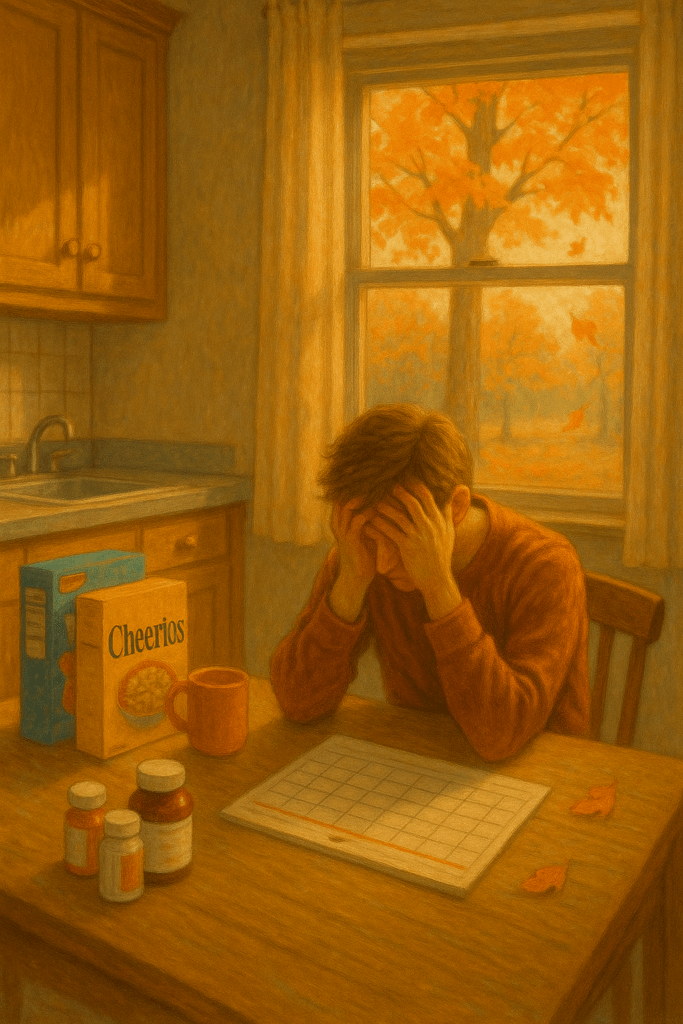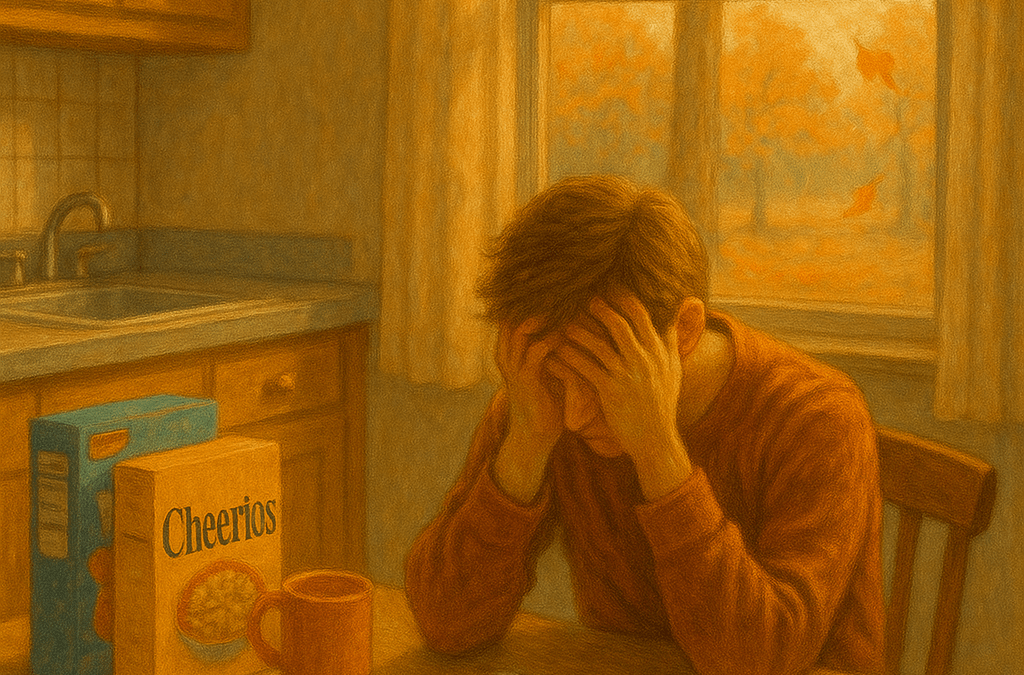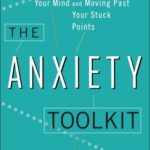
Why Simple Choices Feel Overwhelming
You stand in front of the fridge at 7 p.m., too exhausted to decide what to eat. Earlier, choosing between emails, tasks, and texts felt like climbing a mountain. This isn’t laziness. It’s decision fatigue. More people in Minnesota are reporting feeling overwhelmed by daily choices, especially during high-stress seasons like winter or back-to-school time. The brain can only process so many decisions in a day before it starts to shut down. Understanding how decision fatigue works is the first step to reclaiming clarity and calm.
Understanding Decision Fatigue: The Hidden Drain on Mental Energy
Decision fatigue refers to the deteriorating quality of decisions after a long session of decision making. Every choice we make uses mental energy. From big decisions like career moves to small ones like choosing coffee flavors, each one takes a toll. By the end of the day, this cumulative burden can leave us mentally depleted.
Unlike burnout, which builds over weeks or months, decision fatigue can happen daily. It is often mistaken for simple tiredness or even poor time management. However, studies have shown that this specific kind of mental exhaustion has measurable effects. People tend to make impulsive choices, avoid decisions altogether, or default to the easiest option when experiencing it.
In fast-paced lives filled with technology and multi-tasking, decision-making has become constant. Notifications, apps, meetings, and choices about everything from what to wear to what to watch create nonstop cognitive load. This mental overload is what makes seemingly small tasks feel overwhelming.
Minnesota-Specific Context: Winter, Work, and Decision Burnout
Decision fatigue often spikes during Minnesota’s long winters. The added effort of navigating icy roads, managing seasonal affective disorder, and coping with limited daylight contributes to cognitive exhaustion. Simple tasks like planning meals or scheduling appointments feel harder when paired with weather-related stress.
Minnesota’s diverse urban and rural lifestyles present unique challenges. For instance, a working parent in Minneapolis might juggle dozens of small decisions before 9 a.m. Between daycare drop-offs, bus routes, and deadlines, each choice compounds mental fatigue. Meanwhile, a teacher in Duluth may face decision overload from hybrid teaching models that shift week to week.
Local health systems are noticing the trend. HealthPartners and Allina Health have reported increasing inquiries related to stress and cognitive exhaustion, especially during late fall and early winter months. Mayo Clinic has even published articles helping Minnesotans recognize and manage mental overload.
Using national data as Minnesota specific research unavailable, the American Psychological Association reported in 2024 that nearly 63% of adults felt mentally fatigued after daily decision-making. In regions with harsh climates and demanding lifestyles like Minnesota, this effect may be amplified.
What the Research Says: The Science Behind Mental Overload
A 2024 study from Stanford University published in the Journal of Cognitive Neuroscience found that decision fatigue leads to measurable decreases in executive function. After repeated decisions, the prefrontal cortex shows reduced activity, impacting memory, self-control, and attention.
Another 2025 study from the University of Michigan revealed that people experiencing decision fatigue were more likely to procrastinate or choose easier tasks, even when those tasks weren’t aligned with their goals. The same study found that fatigue was highest among caregivers, healthcare workers, and remote employees juggling constant online decisions.
Cognitive psychologist Dr. Amanda Chen explains that our brains rely on glucose to make thoughtful choices. Once that resource is depleted, the brain starts defaulting to easier responses. She recommends structured routines and decision simplification as ways to protect mental energy.
A Minnesota Story: Sarah’s Week of “Just One More Choice”
Sarah, a 38-year-old nurse from Bloomington, knows the weight of decision fatigue. Every shift at her hospital requires hundreds of snap decisions about patient care, documentation, and communication. At home, she faces another round of choices with her two kids.
“By the time I get to dinner, I stare at the fridge like it’s a puzzle I forgot how to solve,” she says. During the long Minnesota winter of 2024, Sarah began forgetting small tasks and feeling irritable over simple decisions. “I felt like my brain was buffering all the time.”
She sought help through a virtual therapist from Mindfully Healing. Together, they built a routine with preset meal plans and limited evening phone usage. “Once I gave my brain less to manage, I felt like myself again,” she shares. Sarah’s story reflects many Minnesotans quietly battling decision fatigue in high-demand lives.
Strategies to Reduce Decision Fatigue: 10 Practical Tips
Protecting your mental clarity starts with small, intentional changes. Here are ten strategies to reduce decision fatigue:
1. Create a morning routine – Eliminate early decision pressure by starting the day with preset choices.
2. Use meal planning – Set weekly menus so food choices are off your daily list.
3. Limit daily wardrobe options – Choose a simple set of go-to outfits to reduce cognitive load.
4. Batch similar tasks – Group errands or emails to avoid mental switching.
5. Set boundaries on notifications – Turn off alerts during focused tasks.
6. Take decision-free breaks – Step away from choices during lunch or nature walks.
7. Use checklists – Free up memory space by writing out repeated tasks.
8. Delegate when possible – Share responsibilities with family or coworkers.
9. Make big decisions earlier in the day – Preserve mental clarity for important choices.
10. Reflect in the evening – Journaling helps close the loop and reduce mental clutter.
Implementing even a few of these habits can help restore focus and reduce overwhelm, especially during high-stress Minnesota seasons.
FAQ: Common Questions About Decision Fatigue
1. Is decision fatigue the same as burnout? – No. Burnout is long-term emotional exhaustion. Decision fatigue happens when your brain tires from making too many choices in a short period.
2. Can decision fatigue affect children? – Yes. Teens especially feel decision fatigue with academic, social, and digital choices.
3. What are the physical symptoms? – You may feel irritable, mentally foggy, indecisive, or even physically tired.
4. How long does it take to recover from it? – With proper rest and simplified routines, recovery can happen within days.
5. Does decision fatigue impact productivity? – Absolutely. It leads to procrastination, poor planning, and impulsive choices.
6. Can therapy help with decision fatigue? – Yes. Therapists can guide you in setting routines and reducing cognitive load.
7. What if I feel this way every day? – If fatigue is constant, consult your healthcare provider or mental health professional.
Conclusion: Your Brain Deserves a Break
Decision fatigue is more than a buzzword. It is a real and rising issue affecting Minnesotans across all walks of life. The good news is that it’s manageable. By understanding its signs and using clear strategies, you can restore focus and feel more in control. Whether you are parenting through the school year or braving another Minnesota winter, your mental clarity matters.
Get Support:
Find a local Therapist: https://mindfullyhealing.com/clinicians (952) 491-9450
Sources:
- “The Decision Fatigue Epidemic” (Stanford Journal of Cognitive Neuroscience, 2024): https://cognitiveneuroscience.stanford.edu/decision-fatigue-2024
- “Mental Overload in Modern Workers” (University of Michigan, 2025): https://umichpsych.edu/mental-fatigue-2025
- “Stress in America Report” (American Psychological Association, 2024): https://www.apa.org/news/press/releases/stress/2024




